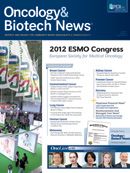Publication
Article
Oncology & Biotech News
Meningioma May Be Tied to Dental X-Rays
Author(s):
New data suggest that dental x-rays obtained frequently at a young age may boost the risk of intracranial meningioma.
Elizabeth B. Claus, MD
New data suggest that dental x-rays obtained frequently at a young age may boost the risk of intracranial meningioma.
“Although dental x-rays are an important tool in well selected patients, efforts to moderate exposure to IR [ionizing radiation] to the head is likely to be of benefit to patients and healthcare providers alike,” Elizabeth B. Claus, MD, professor and director of Medical Research at Yale University School of Public Health in New Haven, Connecticut, and attending neurosurgeon at Brigham and Women’s Hospital in Boston, Massachusetts, and her coauthors wrote.
For their study, the investigators compared dental and therapeutic radiation histories in 1433 patients who had intracranial meningioma diagnosed when they were between 20 and 79 years of age with histories from 1350 healthy controls matched for age, sex, and state of residence.
While meningioma is the most common brain tumor diagnosed in adults in the United States and may lead to neurologic complications with a decreased quality of life, there is limited information on risk factors for this lesion, Claus and colleagues pointed out.
Exposure to ionizing radiation has consistently been found to be associated with a higher incidence of meningiomas, with relative risks ranging from 6- to 10-fold, they added. Notably, dental x-rays are the most common artificial source of exposure to ionizing radiation for individuals residing in this country. Also, unlike many risk factors, exposure to dental x-rays is modifiable.
The analysis showed that over a lifetime, cases were more than twice as likely as controls (odds ratio [OR], 2.0; 95% CI, 1.4-2.9) to report having ever had a bitewing examination. The bitewing examination uses an x-ray film that is held in place by a small tab of paper or plastic between the teeth.
Regardless of the age at which the x-ray films were taken, individuals who reported receiving bitewing films annually or with greater frequency had an increased risk of meningioma for ages <10 years (OR, 1.4; 95% CI, 1.0-1.8), ages 10 to 19 years (OR, 1.6; 95% CI, 1.2-2.0), ages 20 to 49 years (OR, 1.9; 95% CI, 1.4- 2.6), and ages ≥50 years (OR, 1.5; 95% CI, 1.1-2.0).
A significantly increased risk of meningioma was also associated with panorex films, in which an examination is taken outside of the mouth and shows all of the teeth on a single film.
Claus and colleagues wrote that they believe that theirs is the largest case-control study to date to examine the relationship between dental x-rays and the risk of meningioma.
They noted that their findings are bolstered by the study’s population-based design, large sample size, and “the relatively consistent magnitude and direction of risk estimates.”
On the other hand, the potential for underreporting or overreporting of dental x-rays by the study participants represents a study limitation. The reason is that dental care, even in a single patient, is usually obtained from multiple dentists who are not part of a health maintenance organization or hospital-based setting, which makes it difficult for researchers to confirm dental reports “in a timely or cost-efficient manner.”
Claus EB, Calvocoressi L, Bondy ML, et al. Dental x-rays and risk of meningioma. Cancer. 2012;118(18):4530-4537.









